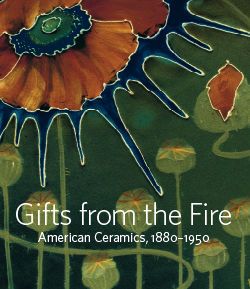Vase
Adelaide Alsop Robineau American
Adelaide Alsop Robineau was a consummate craftsman and a brilliant designer, who, working on her own, tackled the challenging medium of porcelain in an era when the medium was the domain of large-scale commercial factories. Like many talented women of her era, she began her career as a china painter and teacher, and with her husband, Samuel Robineau, founded the extraordinarily influential periodical Keramic Studio (later Design). She was a pioneer in the field of ceramics, and challenged traditional gender roles in her trail-blazing career, throwing the clay herself, decorating, and glazing her vessels. Her artistic porcelains are today acknowledged to surpass the work of any other American studio potter.
This vase is one of Robineau’s rare works with carved rice-grain decoration, whereby slots about the size and shape of a grain of rice are carved into the porcelain body in its leather-hard pre-fired state, and then the cuts are filled in with glaze, leaving a translucent lacy effect. This vase was clearly an experimental work in that many of that the glaze did not cover many of the cuts. In addition, this is likely a very early attempt at crystalline glazes. Only in one spot on the bulbous mid-section are the crystals successful; much of the glaze has badly bubbled and blistered. Nonetheless, the artist deemed it important for she included it in a photograph of some of her early porcelains that she published in Keramic Studio in 1903.
Through her exceptional work which was exhibited widely both throughout the United States and abroad and both her editorial voice and articles in Keramic Studio, Robineau left an indelible print on the history of American ceramic, and was significant in paving the way for American studio potters that follow in the decades after her death.
This image cannot be enlarged, viewed at full screen, or downloaded.
This artwork is meant to be viewed from right to left. Scroll left to view more.




